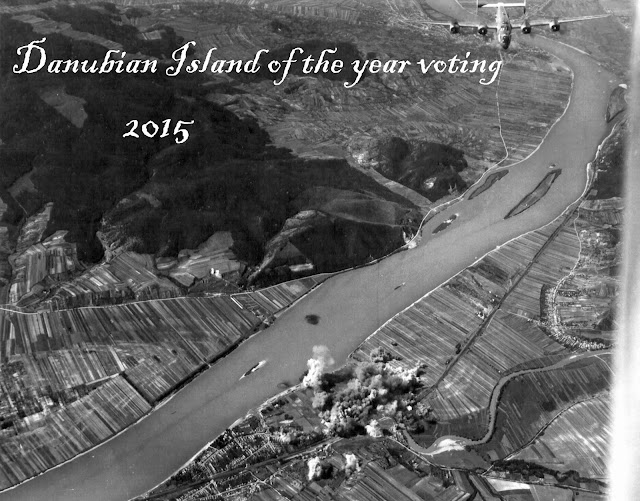This year's hot summer combined with lack of precipitation have brought extreme low water levels on the Danube river. The blog asked its readers to send pictures if they found something interesting emerging from the riverbed, or they only find the landscape different from the usual. It looks like the low water will last well into autumn and with the drained catchment area we have to prepare for even lower water levels.
Lowest water level measured at Budapest in 2015.
According to the summer forecasts the level of the Danube was far from the lowest value ever measured, but we advised not to leave our camera at home. During September and October the water level fell steadily to the value of 63 cm at Budapest which is only 12 cm above the lowest.
But why are we interested in shallow water? - usually the floods draw more public attention. In times of low water Danubian depths reveals itself. Sand and gravel bars, holes in the riverbed, dykes etc. But while walking on the riverbanks you might find wrecks of ships, artifacts sunk long ago. The diving archaeologists are happy, they can work without their work-clothes. Europe's largest river shows us a different perspective, rather a desert than a river.
There are also those who are not quite happy with low water. For example those shipmen who can not work for weeks in this situation. Or the environmentalists who are unable to help when they see tons of dying fish and shell in the drying river arms.
So far the lowest value in Budapest ha been observed in 1947, 6th of November. This was 51 cm. At the Vác gauging station it was -45 cm on the 29th of August. This is not a typo, the water level can go below the lowest point of the gauging station, then they have to extend it downwards. Unfortunately this is not a rare occurrence.
If you happen to wander the banks of the Danube, do not forget to take pictures of the most interesting sights, and please send them (with the place, time and date) to our email address of facebook site.
These are the received pictures so far (from earliest to latest):
Jendricsné Vörös Dóra: Riverbank at Kisoroszi, 2015.07.17. 18:30 Budapest water level: 160 cm
Kurdi Imre: Felsőgöd beach. 2015.07.19. Budapest water level: 147 cm
Zirig Árpád: Mouth of the Morgó creek, Verőce 2015.07.22. 20:00 Budapest water level: 138 cm
Zirig Árpád: Mouth of the Morgó creek, Verőce 2015.07.22. 20:00 Budapest water level: 138 cm
Horváth Tibor: Alsógöd, volcanic tuff breaking the water. 2015.07.23. 22:30 Budapest water level: 139 cm
Riverbank beneath the stone wall in Verőce. 2015.07.25. 17:00. Budapest water level: 139 cm
Riverbank beneath the stone wall in Verőce. 2015.07.25. 17:00 Budapest water level: 139 cm
Horváth Tibor: Alsógöd, volcanic tuff breaking the water. 2015.07.26. 9:40 PM. Budapest water level: 137 cm
Szilágyi Csilla: Inn, Duna, Ilz - Passau: 2015.07.26.
Cigány sandbank, Mohács
Kurdi Imre: Sződliget 2015.07.28. Budapest water level: 135 cm
Kurdi Imre: Sződliget, mouth of the Sződi creek. 2015.07.28. Budapest water level: 135 cm
Alsógöd beach, 2015 08.01. 9:00 Budapest water level: 139 cm
Oligocene clay in Alsógöd
Dunakeszi ferry 2015.08.01. 9:30 Budapest water level: 139 cm
Mouth of the Csurgó creek in Dunakeszi. 2015.08.01. 9:30 Budapest water level: 139 cm
Gödi Island, dam. 2015.08.01. 15:30 Budapest water level: 147 cm
Gödi Island northern side 2015.08.01. 15:30 Budapest water level: 147 cm
Kovács Miklós: Kacsa Island, Pócsmegyer 2015.08.05. Budapest water level: 145 cm
Kovács Miklós: Kacsa Island, Pócsmegyer 2015.08.05. Budapest water level: 145 cm
Kovács Miklós: Inlet of the Palotai Island in Budapest 2015.08.05. Budapest water level: 145 cm
Kovács Miklós: Kacsa Island, Pócsmegyer 2015.08.05. Budapest water level: 145 cm
Kovács Miklós: Kacsa Island, Pócsmegyer 2015.08.05. Budapest water level: 145 cm
Kovács Miklós: Római-part, Budapest 2015.08.05. Budapest water level: 145 cm
Kovács Miklós: Inlet of the Palotai Island in Budapest 2015.08.05. Budapest water level: 145 cm
Wirker Károly: Süttő, Sandbanks near Madár Island 2015.08.11.
Sziget festival, Óbudai Island northern side 2015.08.13.
Schmidt Ádám József: Mouth of the Ördögárok in Budapest 2015.08.13. 10-11 AM Budapest water level: 107 cm
Vessző Katalin: Római part, Budapest 2015.08.14. morning. Budapest water level: 113 cm
Vessző Katalin: Római part, Budapest 2015.08.14. morning. Budapest water level: 113 cm
Vessző Katalin: Római part, Budapest 2015.08.14. morning. Budapest water level: 113 cm
Vessző Katalin: Gravel bar at Szentendre 2015.08.14. afternoon. Budapest water level: 114 cm
Kürti Gábor Dezső: Helembai gravel bar 2015.08.15. Budapest water level: 109 cm (Szob: w. l. -17 cm)
Tarr Dominik: Kis-Háros Island, Nagytétény 2015.08.16. 2-3 PM Budapest water level: 98 cm
Tarr Dominik: Kis-Háros Island, Nagytétény 2015.08.16. 2-3 PM Budapest water level: 98 cm
Becz Miklós: Dunaszekcső, riverbank full of loess cemented by calcium carbonate
Bucsek Tamás: Vác, 2015.09.20. evening. Budapest water level: 95 cm
Horváth Tibor: Sand bar below the Megyeri bridge. 2015.09.22. Budapest water level: 76 cm
Horváth Tibor: Alsógöd, the volcanic tuff outcrops in the Danube. 2015.09.22. Budapest water level: 76 cm
Sand bar of the Szentendrei Island, 2015.10.04. Budapest water level: 72 cm
The Szobi and Helembai gravel bar, behind them the Helemba Island. 2015.10.05. Budapest water level: 67 cm
































































.jpg)
